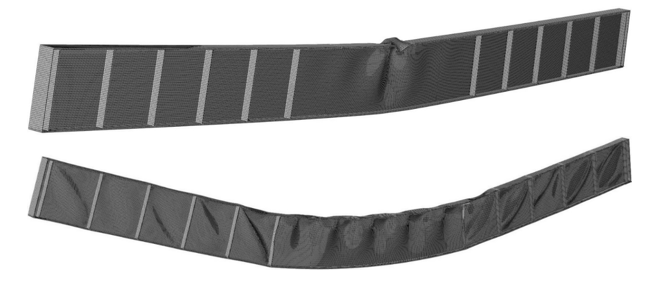Shear Buckling Behaviour of Steel Plate Girders in Fire

Stability effects strongly influence the structural behaviour and the resistance of steel structures subjected to fire. Due to elevated temperatures in fire, the strength and stiffness of steel decreases rapidly and the stress-strain-relationship becomes distinctly nonlinear.
Shear buckling may become more important under fire conditions than in ambient temperature design. During a fire, thin webs heat up faster than flanges of common I-sections, which lead to thermal compressive stresses in the web. These compressive stresses can aggregate shear buckling.
Steel plate girders, which develop local flange buckling due to bending moments at ambient temperature, may fail due to shear web buckling under fire conditions (cf. Figure). The fire behaviour of steel plate girders is numerically analysed using a three-dimensional finite element model for four-point bending test simulations using ABAQUS/Standard. An experimental study on the fire behaviour of steel plate girders is planned and should confirm the findings of the detailed numerical study.

